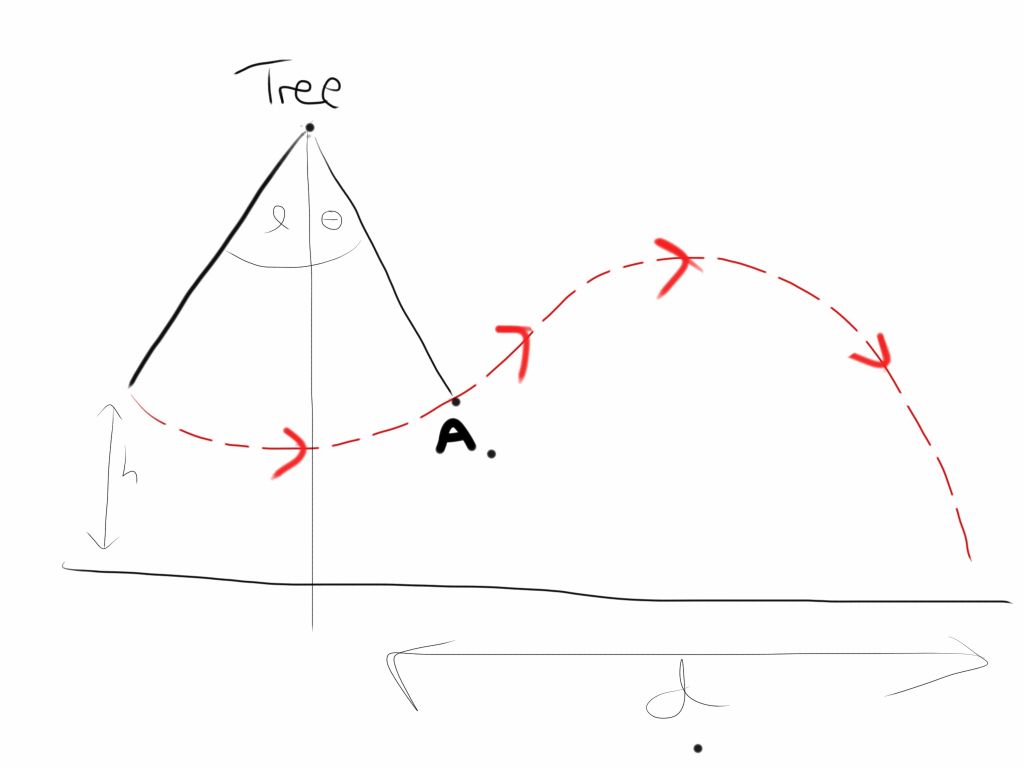Associate
- Joined
- 5 Apr 2008
- Posts
- 1,526
Hey guys...
This is a tricky mechanics problem that I'm trying to solve and then do an experiment to prove for my a2 physics coursework.
It could be called the Tarzan problem...
Tarzan is swinging on a vine... He lets go at a certain point and falls to the ground as a projectile... The question is, given the initial height of the start of the swing from the ground, that the initial velocity is 0 and the length of the rope, when should Tarzan let go of the vine?
I think that to find the speed at any height above the ground for the vine part it is easiest to use conservation of energy laws? What do you guys think to this problem?
A. Is the point where Tarzan lets go of the vine

Edit:
d is from the centre point.
Aim is to achieve maximum distance
I'm pretty sure finding the speed at any point on the vine is best via conservation of energy, assuming air resistance is negligible
Alpha, h and the mass of Tarzan are constants, the mass is m kg
This is a tricky mechanics problem that I'm trying to solve and then do an experiment to prove for my a2 physics coursework.
It could be called the Tarzan problem...
Tarzan is swinging on a vine... He lets go at a certain point and falls to the ground as a projectile... The question is, given the initial height of the start of the swing from the ground, that the initial velocity is 0 and the length of the rope, when should Tarzan let go of the vine?
I think that to find the speed at any height above the ground for the vine part it is easiest to use conservation of energy laws? What do you guys think to this problem?
A. Is the point where Tarzan lets go of the vine

Edit:
d is from the centre point.
Aim is to achieve maximum distance
I'm pretty sure finding the speed at any point on the vine is best via conservation of energy, assuming air resistance is negligible
Alpha, h and the mass of Tarzan are constants, the mass is m kg
Last edited:




